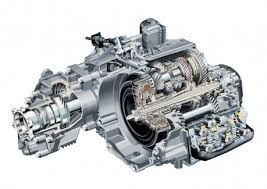Mobile:+86-311-808-126-83
Email:info@ydcastings.com
exhaust manifold v8
Understanding the V8 Exhaust Manifold Function, Design, and Importance
The exhaust manifold is a crucial component of any internal combustion engine, including the popular V8 configuration. It plays a pivotal role in channeling exhaust gases from the engine's cylinders to the exhaust system, ultimately directing those gases out into the atmosphere. Understanding the nuances of the V8 exhaust manifold can provide valuable insights into performance, efficiency, and the overall function of the engine.
What is a V8 Exhaust Manifold?
In a V8 engine, which features eight cylinders arranged in two banked rows, the exhaust manifold collects the exhaust gases produced by the combustion process in each cylinder. Typically made from cast iron or stainless steel, the manifold is designed to withstand high temperatures and pressure while minimizing the risk of leaks. Each of the eight cylinders has an exhaust port that connects to the manifold, allowing the gases to flow smoothly into the exhaust system.
Functionality of the Exhaust Manifold
The primary function of the exhaust manifold is to collect and channel exhaust gases away from the engine. When a cylinder completes its power stroke, the exhaust valve opens, and the remaining gases are expelled. The manifold collects these gases from each cylinder and directs them to the exhaust pipe, where they are further treated by components such as the catalytic converter and muffler.
One of the critical challenges in designing an exhaust manifold is ensuring that it promotes efficient gas flow. This is important for two main reasons
1. Performance Better exhaust flow allows the engine to expel gases more quickly, leading to better intake for the next combustion cycle. This can enhance engine performance, leading to increased horsepower and torque.
2. Efficiency Efficient flow helps in reducing backpressure, which can improve engine efficiency. High backpressure can hinder engine performance and fuel consumption, making it essential to have a well-designed manifold.
Design Considerations
exhaust manifold v8

The design of the V8 exhaust manifold can significantly affect an engine's performance. Engineers consider various factors when designing an exhaust manifold
- Material Choice As mentioned, cast iron and stainless steel are common materials due to their durability and resistance to high temperatures. However, some performance-oriented applications may utilize lighter materials, such as titanium, to reduce weight.
- Shape and Size The shape of the manifold and the size of its passages can influence gas flow dynamics. A well-optimized manifold will have smooth curves and an appropriate cross-sectional area to minimize turbulence and resistance.
- Heat Management Exhaust gas temperatures can reach extremely high levels, so it's important for the manifold to dissipate heat effectively. Heat shields and coatings may be added to protect surrounding components and enhance durability.
- Integration with Turbocharging For those looking to extract maximum performance from their V8 engines, integrating the exhaust manifold with a turbocharger can provide significant benefits. Turbocharged V8 engines use the exhaust gases to spool up the turbine, creating more power without significantly increasing engine size.
Importance in Performance and Maintenance
Upgrading or replacing the exhaust manifold can yield significant benefits for car enthusiasts. Aftermarket exhaust manifolds are often designed with performance in mind, offering improved flow characteristics compared to stock components. These enhancements can lead to noticeable increases in horsepower, torque, and overall engine responsiveness.
From a maintenance perspective, the integrity of the exhaust manifold is essential. Cracks or leaks in the manifold can lead to exhaust gas leaks, which can affect engine performance and introduce harmful emissions. Regular inspections can help identify potential issues early, ensuring that the vehicle runs efficiently and remains compliant with emissions standards.
Conclusion
The exhaust manifold is an integral part of a V8 engine's design, influencing both performance and efficiency. Its primary role in channeling exhaust gases is crucial for running an effective combustion cycle, while thoughtful design considerations can enhance the overall performance of the engine. Whether you're a casual driver or a performance enthusiast, understanding the significance of the exhaust manifold can enhance your appreciation of automotive engineering and how it shapes the driving experience. Proper maintenance and potential upgrades can unlock the full potential of your V8 engine, ensuring not just longevity, but also the best possible performance on the road.
-
Why Should You Invest in Superior Pump Castings for Your Equipment?NewsJun.09,2025
-
Unlock Performance Potential with Stainless Impellers and Aluminum End CapsNewsJun.09,2025
-
Revolutionize Your Machinery with Superior Cast Iron and Aluminum ComponentsNewsJun.09,2025
-
Revolutionize Fluid Dynamics with Premium Pump ComponentsNewsJun.09,2025
-
Optimizing Industrial Systems with Essential Valve ComponentsNewsJun.09,2025
-
Elevate Grid Efficiency with High-Precision Power CastingsNewsJun.09,2025











